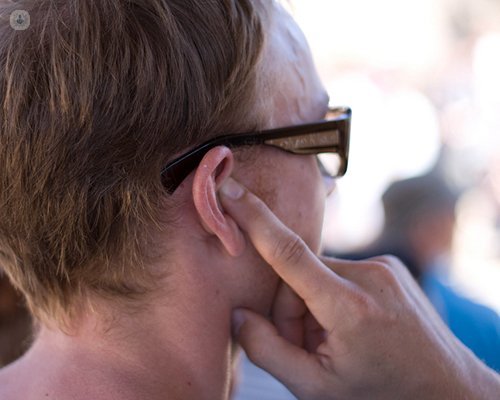Cochlear implants and microsurgery
Written by:Current micro hearing aids help thousands of people in the world with varying degrees of hearing impairment. The correct adaptation and selection are very important to achieve a satisfactory result. When conventional hearing aids or surgery are not effective, osseointegrated implants are very helpful for certain types of people in recovering their hearing. The most recent innovation is this type of hearing aid is adaptation through magnetic induction of a small external element when the patient wants to use it. This allows completely deaf patients to hear, following infections, trauma, malformation, or following the excision of a tumour in the acoustic nerve where the only option to regain hearing is through the use of one of these implants.

Microsurgery of the ear
However, microsurgery of the ear and the use of laser is still the best solution for certain types of hearing impairment such as otosclerosis, which can cause auditory ossicles and the stirrup to become fixed, and mean it needs to be replaced with a prosthesis to restore mobility and hearing.
Otitis or chronic otorrhoea can damage hearing and cause infections which can damage other nearby structures. Surgery allows us to control most of these infections, healing the infection and, in many cases, restoring hearing.
Otological vertigo, also known as Meniere's disease, is a frequent pathology caused by a lesion in the labyrinth and inner ear, causing episodes of violent vertigo, tinnitus and progressive loss of hearing. In patients who don't respond to medical treatment, it is always possible to treat them with surgery, which provides excellent results.
Another type of hearing impairment is caused by an acoustic neuroma (vestibular schwannoma) and is potentially very serious in the development of a benign intracranial tumour, which can be dangerous to the patient. Its removal is currently carried out using microsurgery, laser and ultrasounds, although in many cases the necessity of cutting the auditory nerve results in complete deafness.
It is currently possible for patients to regain their hearing using the latest osseointegrated implants, which allows them to receive sound in the affected side and transmit to the healthy side, giving the impression that the patient is hearing on the deaf side.
In general, it is clear that microsurgery combined with constantly evolving technology allows patients to regain hearing in cases where it would otherwise be impossible.


